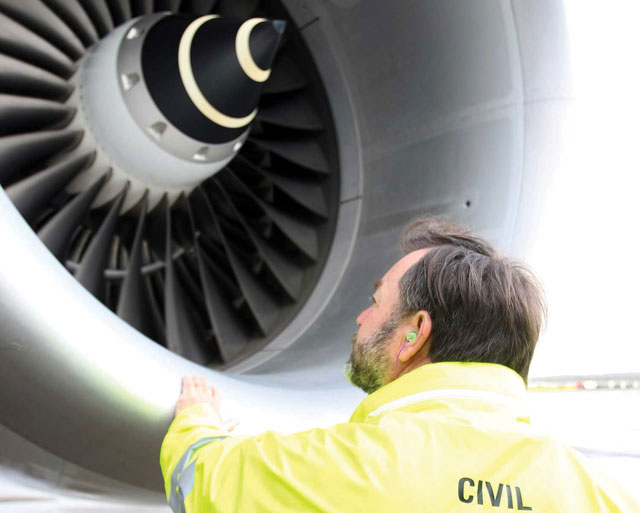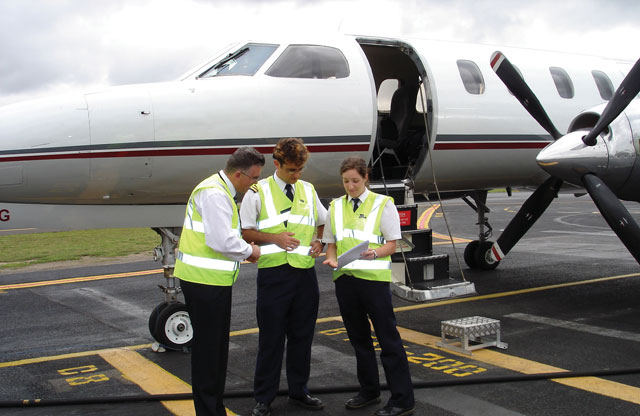This year is set to be a particularly significant one in the history of Australian civil aviation regulations, with the country's long-running regulatory reform programme nearing a conclusion, according to the Civil Aviation Safety Authority (CASA). The completion of new safety regulations, with comprehensive implementation schedules developed for each part, should go through in 2013 - or that is the plan at least.
Australia's regulatory reform programme has not been a happy tale, with the process dating back more than 20 years. During that time, it has been shrouded in controversy, with industry concerns over delays and the lack of consultation, harmonisation and simplification.
"While the need to reform Australia's aviation safety regulations is widely supported, progress was often disrupted and resources re-focused on other activities," says CASA. The process has been put on hold numerous times following "significant structural and governance changes, changing circumstances, and industry input and differing approaches to reform", it adds.
GAINING MOMENTUM
Since 2009, the programme has gained momentum, with the government's Aviation White Paper released that year calling for the reforms to be completed by 2011, with additional resources provided to expedite the drafting of new regulations, including the creation of an aviation safety regulatory development taskforce.
 |
|---|
Australian Civil Aviation Safety Authority CASA says there are 57 new rules made or planned |
Obviously the 2011 target was not met, but despite numerous promises, hurdles and false starts, the authority believes the end is in sight. "CASA remains particularly mindful that it cannot 'ram through' these changes; the process must take account of the capacity for industry to take on these new standards and allow for the legislative drafting and parliamentary approval process. That said, CASA is dedicated to maintaining its continued high level of energy to see this process finalised," it says.
Australia's current Civil Aviation Regulations are old and in some cases outdated, says CASA director of aviation safety, John McCormick. "Many were first drafted more than 30 years ago and the origins of some go back even further. The current rules do not properly fit with a modern aviation system and latest technologies," he says.
EXEMPTIONS
In order to make the old rules work in a modern industry, CASA has issued more than 1,700 exemptions. In addition, rules have not kept pace with international developments.
The new Civil Aviation Safety Regulations (CASR), covering operational, flight crew licensing and airworthiness and maintenance, are aimed at creating a safer aviation system, says CASA. It says they are aligned with ICAO standards and recommended practices, and harmonised with European and US regulations.
The new rules have a number of benefits, according to CASA. They are "logically organised into clear parts", which will make it easier for the industry to find and apply relevant regulations; are designed to address known and likely safety risks with the aim of delivering improved safety outcomes; and will be easier to update and improve.
In total there are 57 CASR parts made or planned, says CASA. Of these, 38 have been made in whole or in part; 17 parts and one sub-part are currently in legal drafting and/or the consultation process; and two additional CASR parts are under development or consideration.
But industry concerns remain. At the end of last year, The Australian Aviation Associations' Forum (TAAAF) released an aviation policy which is highly critical of the regulatory reform. TAAAF comprises the Aerial Agricultural Association of Australia, Australian Association of Flight Instructors, Australian Business Aviation Association, Aviation Maintenance Repair and Overhaul Business Association (AMROBA), Regional Aviation Association of Australia and the Royal Federation of Aero Clubs of Australia, and was established in 2008 to present a united voice to government on key aviation issues and policy.
TAAAF says Australia's regulatory system is "out of step with key trading partners, international best practice and the relevant international treaties", with the lack of international harmonisation being a "missed opportunity".
It believes that CASA has lost sight of its original aim of simplifying and clarifying regulations. "The reform process has been running for over 20 years with little demonstrable improvement in harmonisation or simplification," says TAAAF. The Forum believes the new rules are complex in content and drafting style, with a complete failing of the original intent of "safety through clarity".
CONSULTATIVE MECHANISM
TAAAF also criticises CASA's consultative mechanism, including the Standards Consultative Committee, saying it is "founded on a flawed culture of instructing industry on CASA decisions rather than genuine consultation".
Furthermore, it criticises CASA for "very poor control of the workload", claiming the reform programme has itself become a potential threat to safety.
TAAAF also believes it is not appropriate for the aviation regulatory enforcer - CASA - to draft the law in the first place. Rather, policy and regulatory development should be handled by the Department of Infrastructure and Transport.
 |
|---|
Australian Civil Aviation Safety Authority CASA is seeking comments until 1 March |
TAAAF is calling on the government to remove the regulatory reform process from CASA and place it with a new aviation department. The regulatory reform programme should be characterised by "strong formal and informal consultative relationships with industry", it says.
"Instead of reinventing the wheel in an international industry, regulatory reform should be based on a sound understanding of international best practice and the regulatory regimes used by key trading partners and neighbours, where relevant," it adds.
There should be no uniquely Australian rules, unless industry can demonstrate a need, and the reduction of "red tape" should be a priority, says TAAAF.
The latest regulation proposals released for discussion - the maintenance requirements for sectors of the industry other than regular public transport (RPT) operators - have recently caused industry concern. CASA released five discussion papers on the maintenance proposals at the end of last year and is seeking comments through to 1 March. Prior to their release, the industry had been worried that RPT maintenance regulations would be applied directly to general aviation. The discussion papers have done little to address AMROBA's concerns.
QUALITY CONTROL
AMROBA is particularly concerned with a proposed shift of regulatory responsibility for quality control of aircraft maintenance performed by licensed aircraft maintenance engineers (LAMEs) to processes contained within an organisation's safety management system (SMS), which will introduce additional risk and add significant administrative costs to small organisations. "Has government considered all the risks involved with removing regulatory responsibilities of LAMEs to rely on organisational assigned responsibilities? We certainly hope so. It is a bold decision that has not been implemented in Europe, North America or in New Zealand," says AMROBA executive director Ken Cannane, adding the jury is still out on whether an SMS enhances safety performance.
"Basically, these discussion papers are an elaborate proposal to remove regulatory minimum safety standards for aircraft maintenance by adopting manufacturer's requirements and removing individual - LAME - regulatory requirements," he adds.
The rules would do permanent damage to the viability of the Australian aviation maintenance, repair and overhaul sector as costs increase, according to AMROBA.
Cannane says these are not discussion papers, but rather position papers. "Other options are included to give the appearance that options are consulted with industry," he says.
CASA stresses that the new maintenance rules for non-RPT have not been determined. "We fully recognise the RPT maintenance regulations cannot simply be applied across the board. Each sector of aviation is different and the new regulations will reflect those important differences," McCormick recently said.
WORKING GROUP
CASA says it has been pleased to date with its engagement with the industry during the latest consultation process and has received "considered responses which are reasonable and balanced". CASA says that following the discussion paper process, it might form a CASA-industry working group to further develop the proposals, after which a notice of proposed rule making will be released to provide further opportunity for feedback. "This full process provides the industry with opportunities to review and comment on proposed policy and legislation at each stage of their formulation," says CASA.
CASA no doubt hopes that implementing the new rules will be a smoother and quicker process than developing them has been. The regulatory authority has established a dedicated team - the Operations Regulations Implementation Programme - to oversee the implementation. Comprehensive implementation plans are being drawn up, including training and education programmes, designed to ensure the transition is balanced with available resources in the industry and CASA, says the authority.
CASA does not want to "over-stress the industry" and typically it will be provided two to five years to implement the changes.
CASA intends the new regulations to have longevity and be "a living set" of standards: "The new regulations will be modern, logically organised, internationally aligned and technologically up-to-date to ensure the framework remains sound and effective for the future."
WHAT'S DONE AND WHAT REMAINS TO BE ADDRESSED
New maintenance regulations - Civil Aviation Safety Regulations (CASR) Parts 42, 66, 145 and 147 - were made in December 2010 and came into effect on 27 June 2011. Operators have a two-year transition period for Parts 42, 145 and 147. Part 42 prescribes continuing airworthiness requirements and applies to operators/aircraft used in regular public transport (RPT) operations.
Amendments related to the maintenance regulations in CASR Part 11 (administrative procedures) and a new Sub-part 21.M (covering designs of, modifications of and repairs to aircraft, engines, propellers and appliances) were made in June 2011.
The taskforce is working to complete the other parts. In terms of operational CASRs, these include Parts 91, 119, 129, 133 and 135, which cover general operating and flight rules and air transport operations in aeroplanes and rotorcraft. These have been publicly consulted and comments are being assessed, with updates being made to the legal drafts. These parts are nearing completion, says the CASA.
CASR Part 132, which covers limited category aircraft, is expected to progress to the public consultation stage this quarter, while CASR Part 121, covering air transport operations in large aircraft, will follow at the end of the second quarter, at the same time as Part 131 (non-commercial ballooning). Legal drafting, and industry and public consultations of the two aerial work CASR parts and the three sport and recreational aviation operations parts will be ongoing throughout 2013, says the CASA.
The flightcrew licensing CASRs - Parts 61, 64, 141 and 142 - are expected to be made early this year.
In maintenance and certification, a supplementary regulation to existing certification regulations - Sub-part 21.J (approved design organisations) - has completed the consultation stage and is expected to be made in the first half of the year.
Part 42 maintenance requirements, with "appropriate revisions", will be extended to aircraft used in operations other than RPT, including general aviation (GA). Discussion papers were issued last December with the CASA seeking industry input on extending the application of the maintenance regulations to GA.
Source: Flight International




















